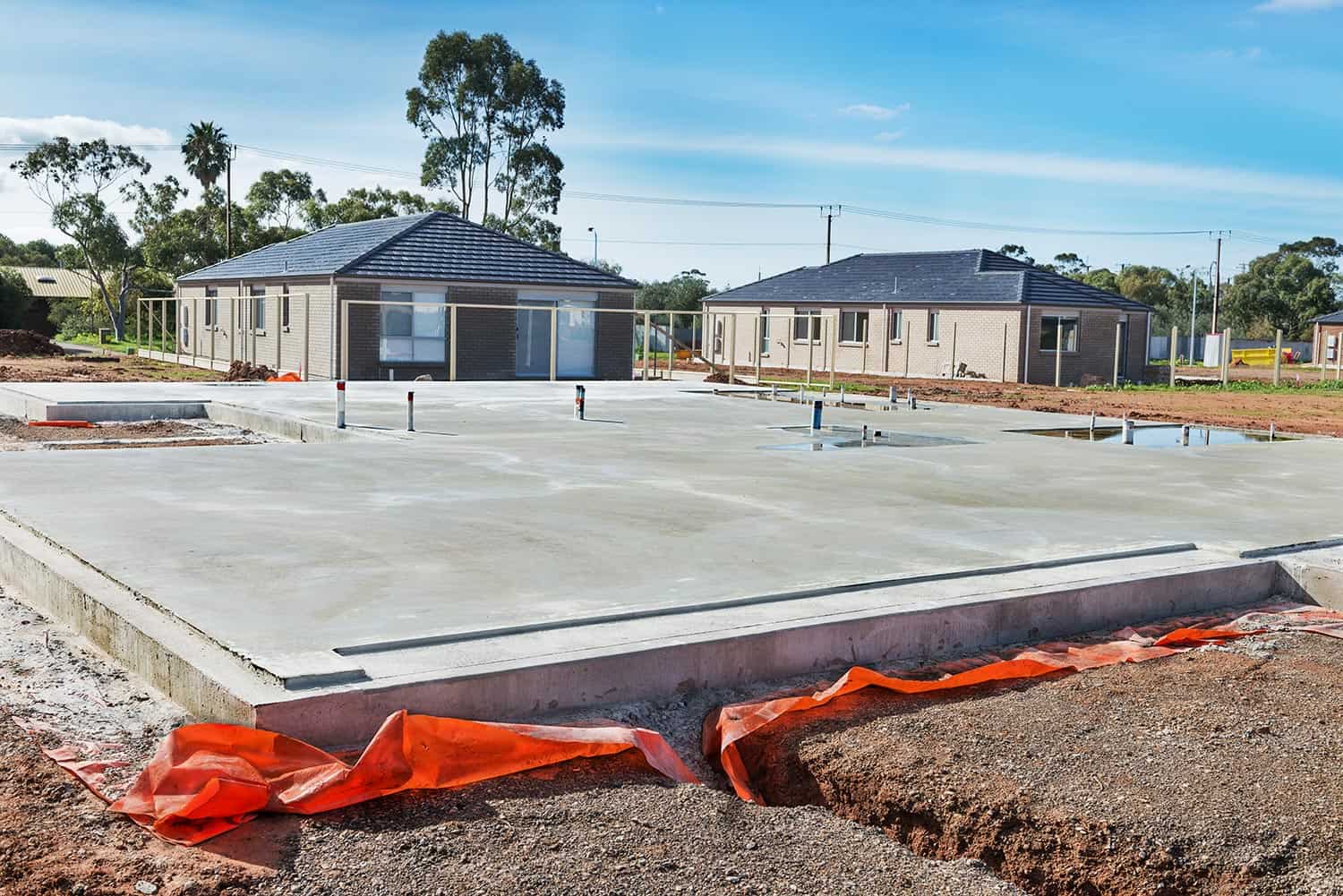A gap in your home's foundation is a serious structural issue that you should address as soon as possible. Not only can the gap become more prominent over time, but it can also make your home more susceptible to water damage and pest issues. We have researched the best way to fill the gap between a home and its foundation for this post. Let's discuss how to do it.
Here are the steps to fill a gap between a foundation and a house:
- Clean the gap
- Install the backer rods
- Apply the sealant
- Smooth out the sealant
- Allow the sealant to cure
Protecting your foundation from cracking and water damage is crucial. The gap in the foundation leaves the home structure vulnerable to damage that can cost thousands of dollars to repair. In some cases, you can do the repair yourself. However, for more extensive and deeper gaps, it's best to have the pros perform the job for you—especially if you have no experience with masonry work.

Steps To Fill A Gap Between Foundation And House
The size of the gap will determine the best way to fill it. You can fill smaller gaps with concrete sealant, various fillers, and caulk. While larger and deeper cracks will require concrete compound and epoxy injections.

Things you'll need:
- Closed-cell backer rods
- Spine roller
- Scissors
- Concrete patching compound
- Push roller
- Putty knife
- Sealant
- Hard-wired brush
- Caulk gun
- Paint mixer stick
1. Clean the gap
Before working on the foundation, it's best to install a tarp around the bottom of the foundation to prevent the ceiling from getting on your lawn. Start by cleaning the gap using your hard-wired brush. Be sure to remove any dirt, debris, or broken gravel inside of the gap. Sweep out the dirt and place it in a trash bag to avoid getting it on your lawn.
Next, closely inspect the entire length of the gap to determine whether or not it goes around the entire perimeter of your home. If it does, make sure that you have enough materials to cover the whole gap. This includes backer rods, caulk, sealant, and concrete compound.
2. Install the backer rods
Start by cutting and then installing the backer rod into the gap. Use your spline roller to push the rod entirely into the hole so that there is little space between it and the foundation.
For most cases, a 3/4" rod should be thick enough. However, it's always best to purchase a few extra rods just in case. Once you have installed the backer rod into the gap, take a look at your work to ensure that you haven't missed any areas.
3. Apply the Sealant
Next, open up your concrete mixture or ceiling and prepare it for application. Take your putty knife and apply the sealant to the gap in front and around the backer rods.
Ensure that the sealant covers the front of the rod so that it is no longer visible—and it should expand at least 1 1/2 inches above and below the gap. If you are repairing a long gap, only work on a 2-foot section at a time to avoid skipping spaces between the rods.
4. Smooth out the sealant
Next, smooth out the ceiling with your putty knife so that it is flush with the rest of the foundation. Keep in mind that it won't be perfect (as the concrete mix is pretty thick), but it shouldn't stick. You can even use a plastic spoon to help guide the sealant into the smaller nooks and crevices of the foundational gap.
5. Allow the sealant to cure
Once you have applied the sealant to the entire gap, go back and check your work to ensure no backer rods or open spaces are visible in the foundation. If everything looks good to go, allow the sealant to dry and cure for the recommended time. This will usually be anywhere from 24 to 72 hours.
Want to see how to do it? Check out this video:
Should I Seal my Foundation?
Applying a waterproofing membrane to your home's foundation prevents water damage and stops seepage into the foundation. Sealing your foundation is typically recommended if you live in an area prone to extreme winter conditions or heavy rainfalls,
How Do you Seal the Foundation of a House?
You can seal a foundation of a house using a concrete patching compound or another type of sealer. Before you seal the foundation, you'll have to dig up the dirt around the foundation to gain access to the entire length of the foundation. After the compound or mastic coating (sealant) has been applied to the foundation, a drainboard is typically applied over it.
The board's purpose is to divert water away from the home's foundation and direct it to the outside. Sometimes other drainage lines will be set up as well--all in an effort to prevent the home's foundation from becoming waterlogged during periods of heavy snow or rainfall.
How Much Does it Cost to Seal a Foundation?
The cost to seal a foundation will depend on your location, the size of your home, and other factors surrounding the foundation itself. The average cost can range anywhere from $3 to $11 per square foot, with a total cost of about $2,000 over $10,000 for the job.
Can I Seal my Foundation Myself?
You can do this yourself, though it's generally not recommended. You should take caution if you plan to do the job yourself, and it's best to at least have a pair of extra hands to help you. Here is why some home building experts recommend having a professional perform this task for you:
It's Hard Work
Sealing a home's foundation involves digging up the current foundation to install the membrane at the bottom of it. This work is fairly labor-intensive, especially if you have a larger home.
It's definitely a lot of work for one person alone, and you should take the proper precautions to prevent back injury. In some cases, the depth of the membrane we need to go as low as 8 ft--that's a fair amount of digging.
You May not Have all the Materials
Many materials you need to install a foundational seal may not be easy to acquire at your local hardware store. For example, professional contractors' polyurethane is actually a specialized material that isn't available at your local stores such as Home Depot or Lowe's.
Other items such as heavy-duty drainage boards and other professional-grade insulating material can also be difficult for the everyday DIYer to acquire.
It Takes Time
Even if you are physically capable of performing the task yourself, it will take a significant time commitment to execute this project—this means time off from work. Even with a team of two or three helpers, the excavation itself can take 1-3 days to complete.
And remember that you'll need to backfill the dirt that was excavated. Replacing the dirt can be challenging if you're still recouping from digging it up and applying the sealant. So to say, it's best to plan this task thoroughly before taking it on.
What Can I Use to Fill Gaps Between the Foundation and Sidewalk?
You can use a combination of caulk and backer rods to fill the gaps between the foundation and a sidewalk. They are pretty much used in the same way to fill the gaps between the foundation and the home.
And in some cases, if the gap is relatively small, you can use the caulk by itself. For example, if it is relatively narrow, as in less than 1/4-inch thick, a backer rod typically won't fit inside a bit, and caulk will suffice.
You can install backer rods relatively easily; you simply cut them to fit them snugly inside the gap and place them inside of it. You'll then apply caulk to the front of the gap so that it covers the backer rods. You can use a putty knife to smooth the caulk over the gaps that are smooth and even. It's best to use a silicone latex caulk for this job as it is water-resistant and very durable.
Wrapping Things Up
It's not unusual for your home to develop gaps in its foundation over time. However, you shouldn't ignore these gaps when they occur. Take pictures of them and have them inspected by professionals if they seem too long or deep.
Remember that these gaps leave space for wildlife, pests, water, and snow to penetrate the exterior of your home and reduce your quality of life. Fixing foundational gaps can be a suitable DIY project. However, it's best to have an expert seal your home's foundation to ensure it's done correctly.
Before you go, be sure to check out some of our other posts:
